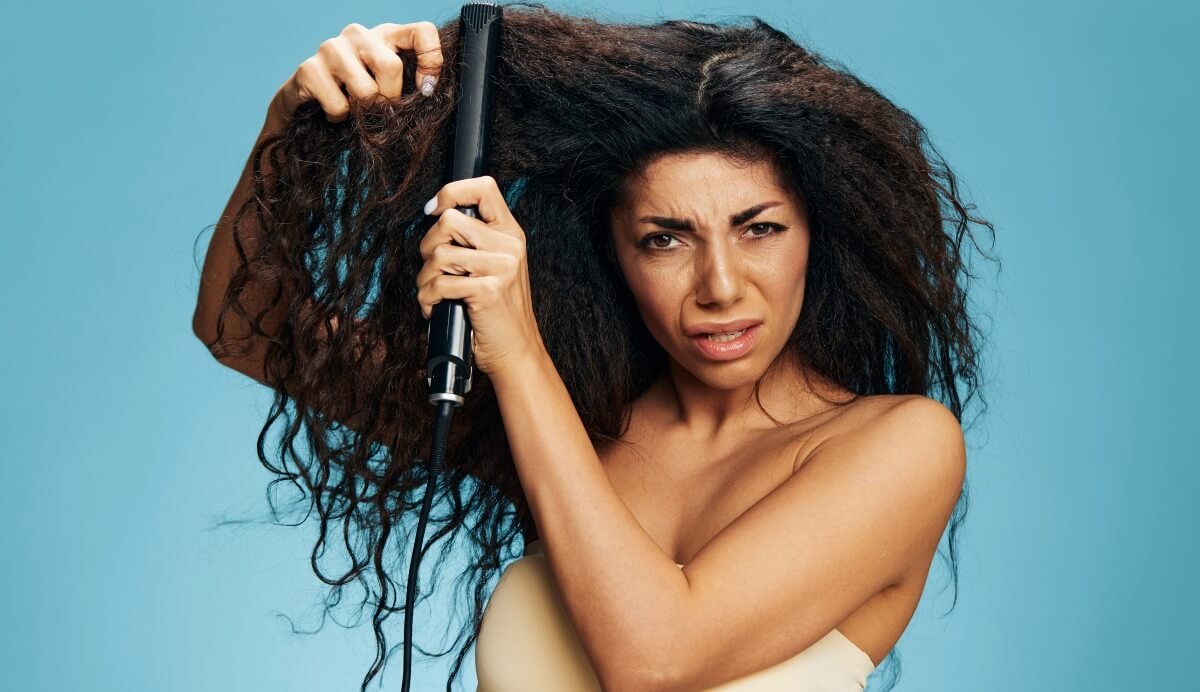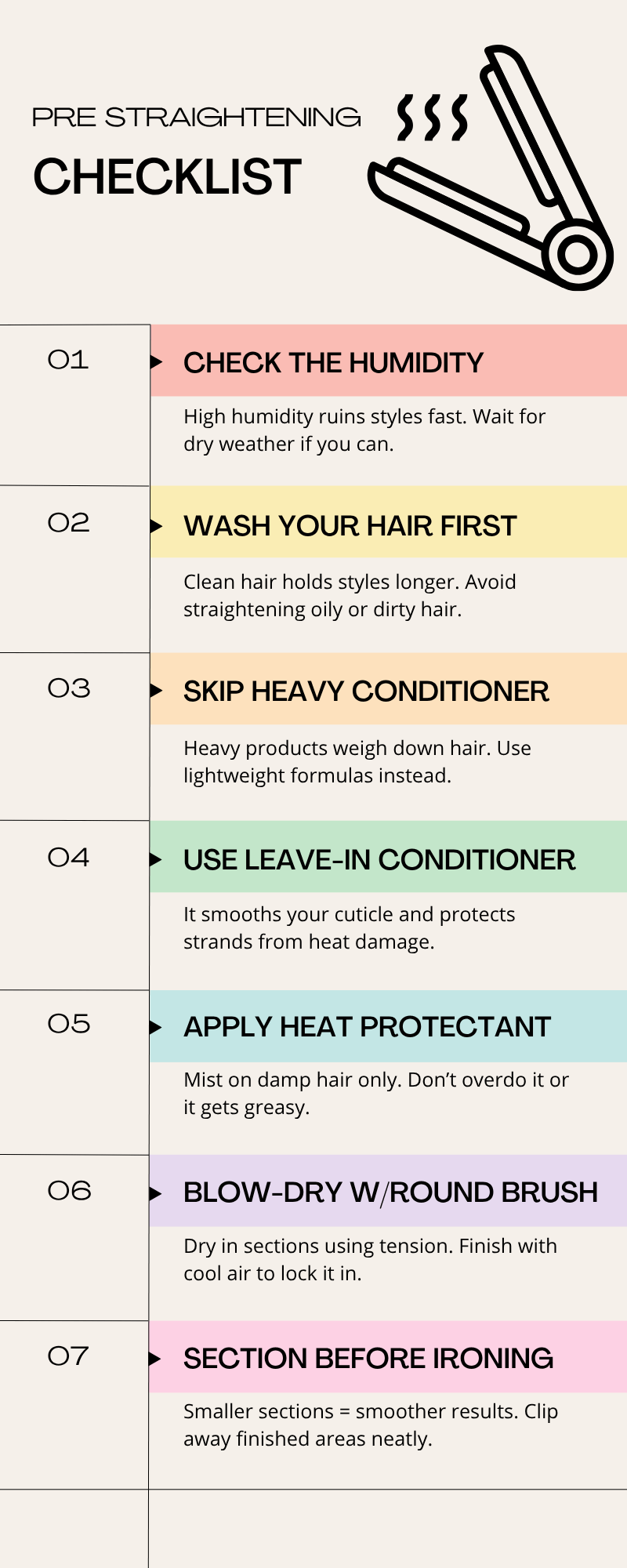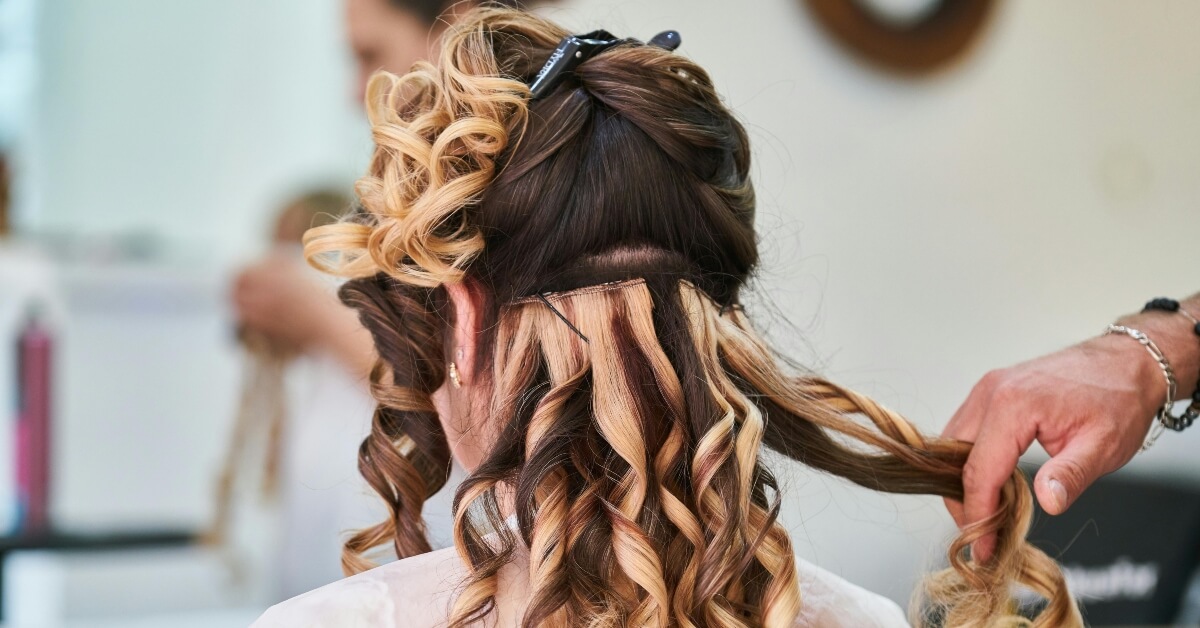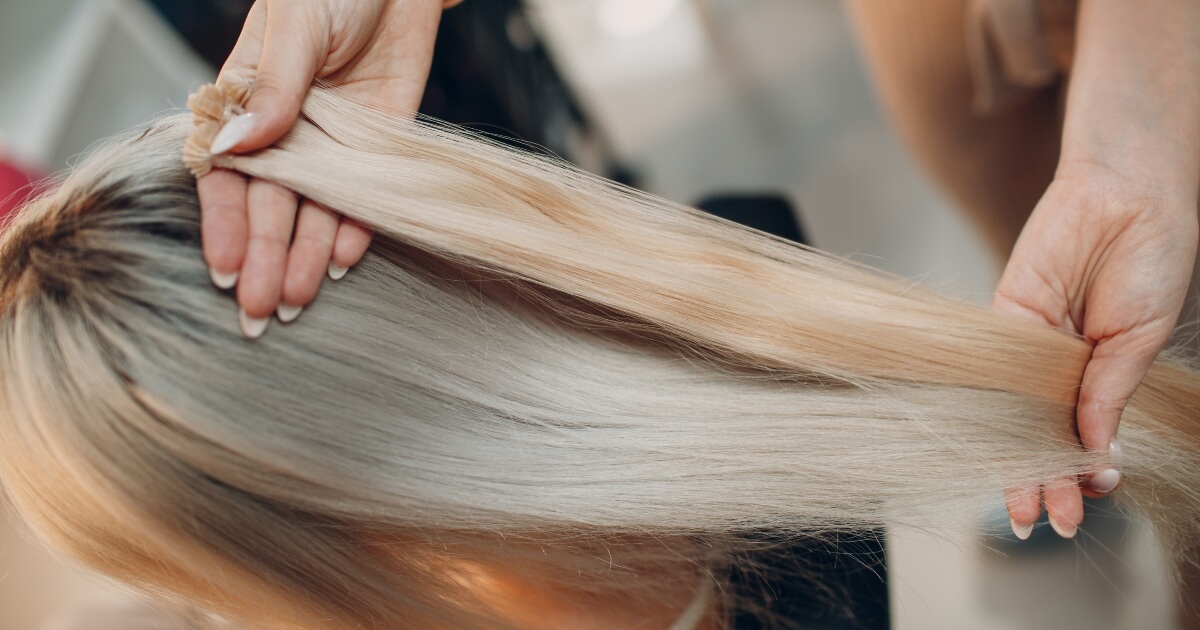Do you ever feel like keeping your hair straight is impossible?
Maybe you’ve spent a lot of time straightening your hair only to wake up with frizzy hair the next morning.
It’s true that straightening hair can be a challenge, especially for people with certain kinds of hair. But you might have missed some important steps in the process.
That’s why we’ve compiled a list of 27 tips for long-lasting, straight hair. The process is not just about the act of straightening your hair with a flat iron. It’s also about getting your hair ready and preserving your work.
If you are struggling with your hair and need the guidance of an expert stylist, contact Societe Salon. Our elite hair stylists know how to deliver the beautiful hair you have been looking for.
Before You Use a Flat Iron or Other Heat Styling Tools
There are several steps you should take to increase your odds of achieving long-lasting straight hair. Many people skip ahead and are disappointed when their style doesn’t hold.
1. Wait for Lower Humidity
Check the weather before you straighten your hair. High humidity will ruin your work in hours. Wait until the humidity is below 60 percent if possible. Rain is obviously bad for straightened hair. But even overcast, muggy days can cause problems. Your hair absorbs moisture from the air and swells back to its natural texture.
If you absolutely have to straighten your hair when it’s humid outside, use extra anti-humidity products and plan for touch-ups.
2. Wash Your Hair
Clean hair is more likely to stay straight. Oil, sweat, and product buildup are not conducive to straight hair. Wash your hair the night before or the morning when you straighten your hair. You’ll have a much easier time with the flat iron.
You should not straighten your hair if you just used a heavy conditioner, as it’s going to add excess weight to your hair.
3. Don’t Straighten Hair that Has Product Buildup
If you regularly straighten your hair, you should use a clarifying shampoo once every week. This is going to clear out built up product, which makes it harder for the flat iron to do its job.
Hair with product buildup is often going to feel rough, and this feeling isn’t going to go away when you straighten your hair. Clean hair is also going to look shinier.
Signs you need clarification include hair that feels coated, products that don’t seem to work anymore, and styles that don’t last as long as they used to.
4. Use Heat Protectant
Heat protectant isn’t optional. It’s essential for preventing damage and helping your style last longer. The problem is that most people don’t use it correctly.
You should only put heat protectant on damp hair. Don’t put it on dry hair. This helps it distribute evenly and absorb better. Use your fingers or a wide tooth comb to work it into your hair.
Don’t use too much though. Heavy application can weigh your hair down and interfere with straightening. You don’t need a heavy coating. Keep it light and even.
5. Don’t Forget About Leave-In Conditioner
Leave-in conditioner smooths your hair cuticle and provides extra protection. Apply it to your mid-lengths and ends only. Avoid your roots unless your hair is extremely dry.
Use a lightweight leave-in conditioner, so it won’t weigh down your hair. Look for leave-ins specifically designed for heat styling.
This step is especially important for damaged or chemically processed hair. These hair types need extra moisture and protection during heat styling.
6. Blow-Dry Your Hair and Brush it Out with a Round Brush
This helps to smooth out your hair, which should help it stay straight for longer. Make sure the brush is large and round. Pull your hair tight as you dry out each section. Aim the blow dryer down your hair strands.
Finish each section of your hair with cool air from the blow dryer. This sets the smooth pattern and prepares your hair for flat ironing.
7. Don’t Straighten Wet or Hot Hair
Let your hair dry completely before straightening it. If you’re hot, give yourself time to cool down. If you’re impatient, you’re probably going to damage your hair. Excess moisture turns into steam, and steam is going to cause damage.
Even if your hair feels dry, it might still contain moisture. Wait 10-15 minutes after blow-drying before you start straightening.
Touch different sections to make sure they’re cool. Warm or damp hair won’t straighten properly and the results won’t last.
8. Section Off Your Hair Properly
Proper sectioning ensures every strand gets straightened evenly. This prevents some pieces from reverting faster than others.
You can section off your hair with clips. This makes things more manageable. Start with horizontal parts and work in layers from bottom to top.
Smaller sections take longer but give better results. Each section should be thin enough that you can see through it when held up to the light.
Getting the Straightening Right
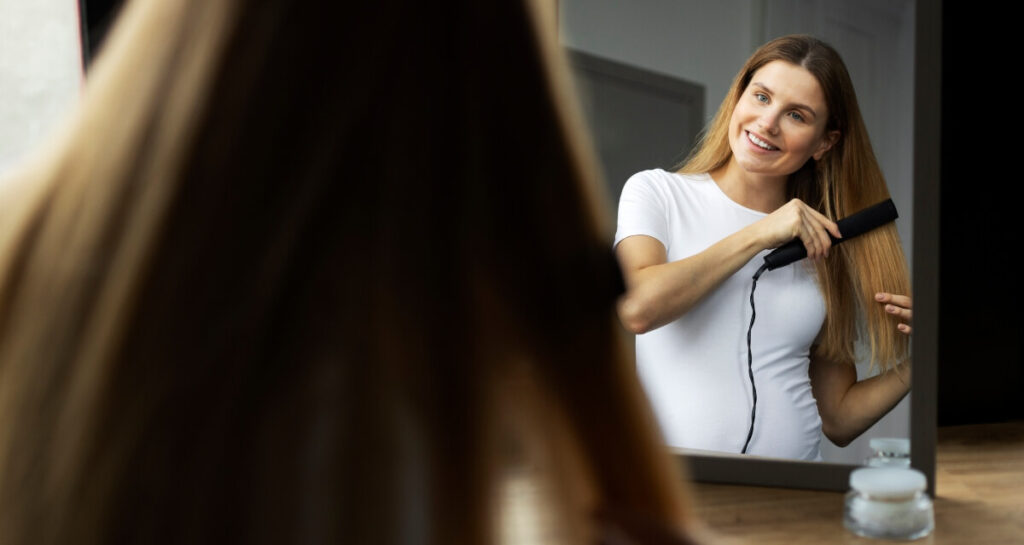
The actual straightening process determines how well your style turns out and how long it lasts. These technique tips make all the difference.
9. Find Your Hair’s Perfect Temperature
Different hair types need different temperatures. Fine hair needs lower heat. Thick, coarse hair needs more.
Here are some temperature guidelines based on hair type:
- Fine or damaged hair: 250-300 degrees Fahrenheit
- Medium hair: 300-350 degrees Fahrenheit
- Thick or coarse hair: 350-400 degrees Fahrenheit
- Highly resistant hair: 400-450 degrees Fahrenheit
Start with lower heat and gradually ramp it up if you need more.
10. Always Start at the Bottom
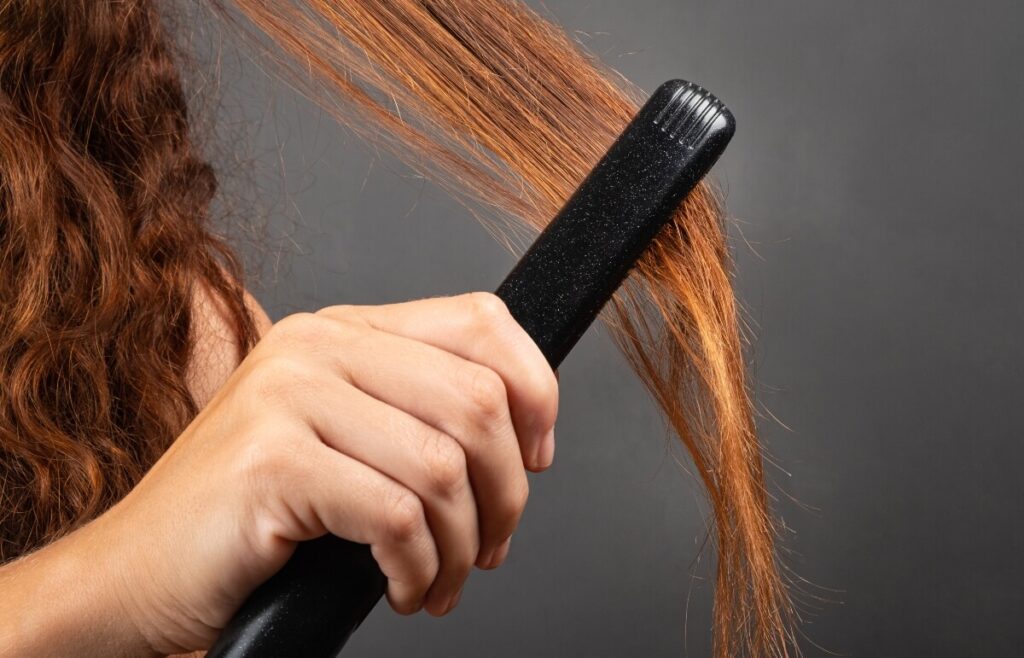
Whenever you are trying to straighten your hair, you should work from the bottom layers up to the top. This way the upper layers can’t fall and disrupt lower sections of hair.
Start at the nape of your neck and work toward your face. Save the very top layers for last since these are most visible and need the most attention.
Keep those finished sections clipped away from your work area. You don’t want them falling down and messing up what you’ve already done.
11. Take it Slow; Moving Too Fast Doesn’t Work Well
Take your time with each pass of the flat iron. Moving too fast means the hair doesn’t have enough time to straighten out.
I always tell people one slow pass beats three quick ones. Redoing parts of your hair are just going to cause damage. It can even make stubborn pieces harder to straighten.
Try counting slowly as you move down each piece. This helps prevent you from rushing through the process.
12. Don’t Put Too Much Pressure on Your Hair
You need to find just the right amount of pressure – not too much and not too little. You want the flat iron to glide through your hair. If your flat iron keeps catching or snagging, make the sections smaller and do it again.
If you want, you can practice on a section of your hair, such a section that other people won’t see when you have your hair down. This should help you figure out what will work with your hair.
13. Pay Extra Attention to Your Roots
Your roots will be the first thing to go back to their natural state. Spend extra time getting them really straight.
Get as close to your scalp as you can without burning yourself. Angle the iron down slightly so you’re smoothing the hair away from your head.
Don’t forget about the pieces around your hairline either. Those frame your face and everyone notices when they start curling again.
14. Take Care to Seal the Ends of Your Hair Strands
The ends of your hair are older and more damaged than the rest. They need special attention if you want them to stay straight.
Clamp down firmly on your ends and pause for an extra beat. This seals everything in place.
Some people have ends that want to flip no matter what. If that’s you, do an extra pass focusing just on that last inch.
15. Let Each Section of Your Hair Cool Down Before Moving On
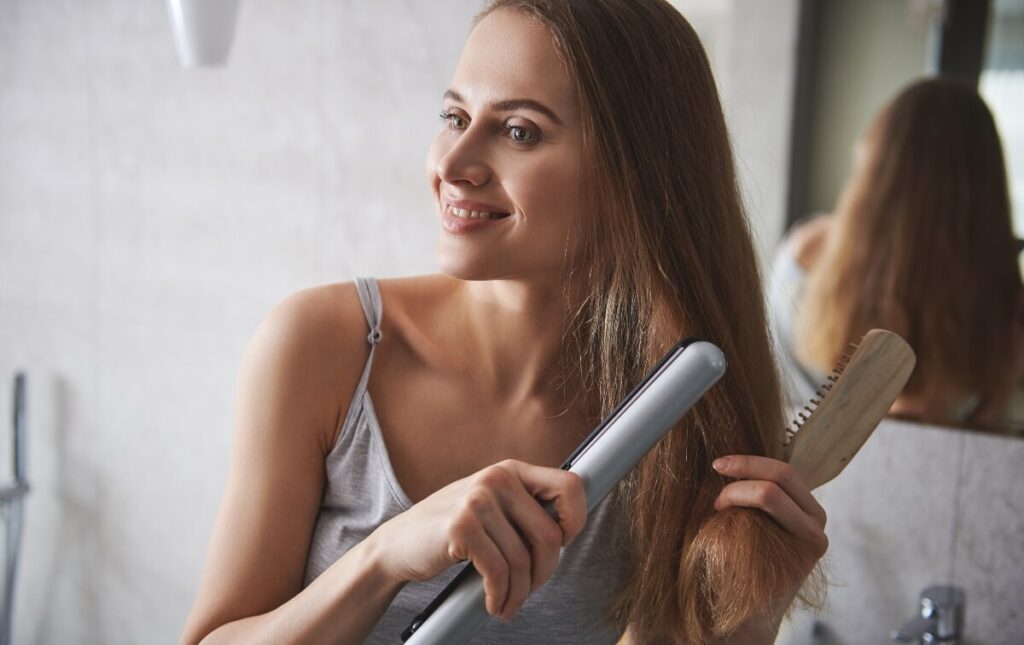
Hot hair is basically moldable plastic. Touch it wrong and you’ll mess up all your work.
I know it’s tempting to keep going, but let each section cool down completely. Yes, it takes longer. Yes, it’s worth it.
Use your blow dryer’s cool shot if you’re impatient. Just blast each section with cold air before moving to the next one.
16. Switch Your Blow Dryer to Cold
Cold air is like setting spray for your hair. It locks everything in place and makes your hair shinier too.
Point your blow dryer downward and give your whole head a good blast of cold air. Work from your roots all the way down to your ends. This can make a huge difference.
Locking in Your Results
What you do in the first few hours after straightening basically determines everything. Mess this up and your hair will be frizzy by bedtime.
17. Apply Serum While Hair is Still Warm
Serum soaks in better when your hair is still a little warm from styling. The heat opens up the hair shaft slightly.
Start with just one drop. Seriously, that’s all you need at first. You can always add more but you can’t take it back.
Look for serums with silicones if humidity is your enemy. They create an invisible shield around each strand.
18. Protect Your Work From Humidity
This is your last line of defense against frizz. Don’t apply anything else after your anti-humidity spray.
Focus on your hairline and any spots that usually frizz first. Keep a small bottle in your purse for touch-ups, because humidity can sneak up on you.
19. Don’t Touch Your Hair for 30 Minutes
It’s only natural to want to see how your smooth hair feels. The problem is your hands are covered in oils that will transfer to your hair.
Wait at least half an hour before you touch your hair, it needs time to set. One wrong touch can create a dent that lasts all day.
Use a mirror to check how you look instead of running your fingers through your hair.
20. Don’t Tie Your Hair Right After You Straighten It
Ponytails and buns are the enemy of freshly straightened hair. The elastic creates creases that are almost impossible to get out.
If you absolutely must tie your hair back, wait a few hours first. When you do use a hair tie, make it a silk scrunchie. Regular elastics are too harsh.
Loose braids work better than tight ponytails if you need your hair out of your face. They don’t create those obvious dent marks.
21. Stay Away from Steam and Other Sources of Heat
Steam is like kryptonite for straightened hair. Bathrooms after hot showers, kitchens while cooking, even opening the dishwasher can ruin your work.
Cover your hair with a shower cap or scarf if you can’t avoid steamy areas. Even a few seconds of exposure can cause problems.
22. Skip the Hair Perfumes on Day One
Most hair perfumes have alcohol, which dries out your hair and leads to frizz. Some also have water, which basically undoes your straightening.
Read the ingredients if you’re not sure. When in doubt, spray your clothes instead of your hair.
Save the hair perfumes for two or three days after straightening your hair.
Whether you want to try a new style or just need help managing your hair type, Societe Salon has the expertise you need. Check out the services on our website to learn how we can help you get the hair you’ve been dreaming of.
Protecting Your Style Overnight
Your pillow can undo hours of work in one night. These tips help you wake up with hair that still looks good.
23. Switch to Silk or Satin Pillowcases
Cotton pillowcases are rough on your hair. They create friction that makes your cuticle stand up and look frizzy.
Silk is amazing but expensive. Satin works almost as well and costs way less. Either one lets your hair slide around instead of getting roughed up.
If you can’t afford a silk pillowcase, lay a silk scarf over your regular pillow.
24. Try a Silk Hair Wrap or Scarf
Wrap your hair loosely in a big silk scarf and tie it at your neck, just not too tight. Silk bonnets work great too if you can find one that stays put.
Short hair usually doesn’t need wrapping, but it’s great for longer hair.
25. Use a Tiny Bit of Hair Oil on the Ends
Your ends dry out faster than the rest of your hair. Dry ends curl up and look frizzy by morning.
Put just a drop of oil on your fingertips and smooth it over the last inch or two of your hair. Don’t go higher up or you’ll look greasy. Argan oil works well, but any lightweight oil is good.
26. Loosely Secure Long Hair
Really long hair can get tangled while you sleep, even when it’s straight. You can put your hair in a loose ponytail to avoid this.
Use a silk scrunchie and position it low so you’re not sleeping on it. The goal is to keep your hair contained without creating dents.
27. Control Your Bedroom’s Humidity
Humid bedrooms can undo all the work you did to straighten your hair. If your room feels sticky, get a dehumidifier.
Keep windows open if possible and don’t dry wet clothes in your bedroom, as it puts moisture in the air.
Your breathing and body heat already create humidity. You don’t want your bedroom environment to make it worse.
The bottom line is: if you want straight hair that is more likely to last, you need to be patient and get the details right. You also need to take the proper steps to prevent damage to your straightened hair, such as from humidity. If you trust the process and stick to it, you’re more likely to get the result you’re looking for, regardless of your hair type.
You can also rest assured that you’ll get better at this the more you do it. Practice makes perfect, especially if you take note of what works for you. Everybody’s hair is a little different.
Don’t damage your hair for the sake of a temporary style. Use heat protection, take breaks between straightening sessions, and deep condition regularly.
If you do it right, you can have straight hair for several days, not just a few hours.
When Things Go Wrong
You might follow many of these steps, but still see your straight hair get damaged. Fortunately, there are ways to fix the damage without starting completely over.
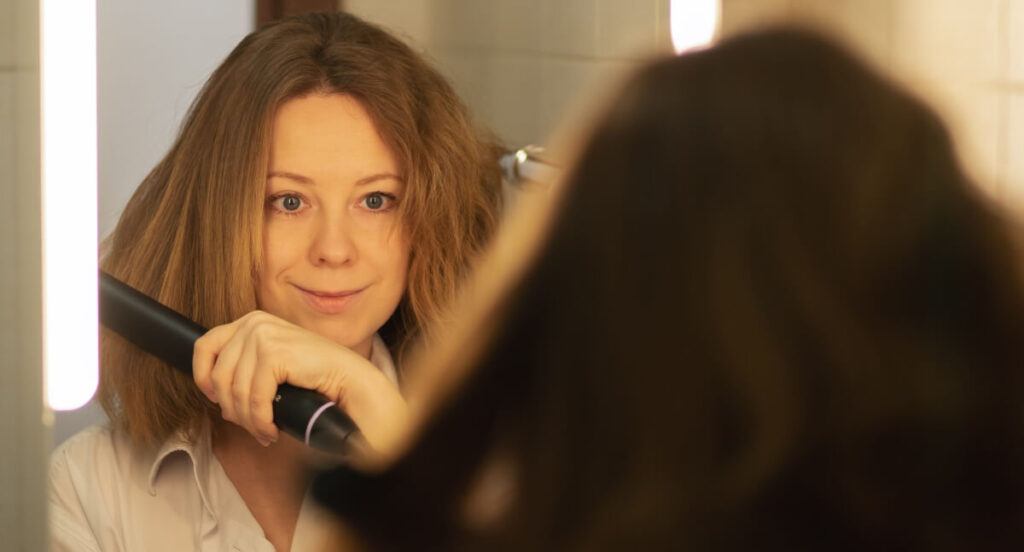
Quick Fixes
- Use a little serum around your hairline to smooth things out
- Use a flat iron for serious frizz, just keep the heat low, as your hair has already been heated once
- Dry shampoo helps absorb moisture and oil that make hair frizzy; use it on problem areas
When you finish touching up a section of hair, let it cool down before you work on any other sections.
How to Tell When It’s Time to Start Over
Sometimes it’s better to just wash your hair and begin again. Here are some signs that it’s time to start over:
- If more than a third of your hair has reverted
- Your hair feels stick and gross because there’s too much product in it
- There’s a lot of roughness or breakage
How Long is Straight Hair Going to Last?
There are many factors that affect your hair’s ability to stay straight, including:
- Hair texture
- Hair porosity
- The flat iron you use
- How much heat you use
- Humidity
- Your daily routine
Texture and Porosity of Your Hair
For example, fine hair usually stays straight for a couple days before it needs a touch up. Fine hair is smoother, so it’s harder for it to stay straight. The good news is that fine hair is much less likely to get frizzy when it stops staying straight.
If your hair is somewhere between coarse and fine, it may stay straight for about 3-5 days. Thick hair is going to stay straight the longest (about 4-7 days). Denser hair does a better job holding styles. However, it is going to take more work to straighten dense hair.
You also need to consider porosity. If your hair is not very porous, it’s going to hold onto moisture much longer. This means your hair will hold onto styles longer. On the other hand, if your hair is highly porous, it’s going to absorb moisture much faster. This means it is going to lose straightness much faster.
Your Flat Iron
The quality and type of your flat iron significantly impact how long your results last. Professional-grade irons with even heat distribution create more durable results than cheaper alternatives.
Ceramic plates work well for most hair types and create smooth, long-lasting results. Titanium heats up faster and works better on thick, resistant hair. Tourmaline adds negative ions that reduce frizz and increase shine.
The width of your iron matters too. Narrow plates give you more control but take longer. Wide plates cover more hair quickly but can be harder to maneuver around shorter layers.
The Temperature of Your Flat Iron
Using the right temperature for your hair type is crucial for both effectiveness and longevity. Too low and your hair won’t straighten properly. Too high and you’ll damage your hair while getting results that don’t last.
The sweet spot varies by hair type, but generally ranges from 250°F for fine hair up to 450°F for very resistant hair. Finding your hair’s ideal temperature takes some experimentation, but it’s worth the effort.
The Weather Where You Live
Humidity is the biggest enemy of straightened hair. In low humidity (below 40%), your style can last a week or more. In high humidity (above 70%), you might only get a day or two.
Temperature swings also affect longevity. Going from air conditioning to hot outdoor air causes your hair to expand and contract, which can disrupt your style.
Wind, rain, and even sleeping in a hot room can all impact how long your straightened hair lasts.
Your Daily Routine
What you do after straightening matters enormously. Touching your hair frequently, sleeping without protection, and using the wrong products can all shorten how long your style lasts.
Exercise and activities that cause sweating will reduce longevity. Even things like cooking over a hot stove or taking a steamy shower can affect your results.
The products you use daily also matter. Heavy oils and creams can weigh down your style, while the right lightweight serums can actually help it last longer.
How Humidity Causes Frizzy Hair
Ever step outside with perfect hair only to have it turn frizzy in minutes? That’s all humidity.
Your hair soaks up moisture from the air. When it gets humid, water gets into your hair and makes it swell up. This ruins the smooth shape you created with your flat iron.
The bonds in your hair go back to their original pattern. Your natural curls and waves come back because that’s what your hair wants to do.
The way your hair reacts to humidity depends on your hair type. Fine hair might just get puffy. Thick or damaged hair can go completely back to its natural state in a few hours.
If you’ve colored your hair or used chemicals on it, you’re going to have more problems. Those treatments create tiny holes where moisture can get in.
Your hair has an outer layer that’s supposed to keep moisture out. But when you use heat tools, you lift up those protective pieces. That’s why freshly straightened hair often gets frizzy faster than hair that’s been styled for a day.
Temporary Hair Straightening or Permanent Hair Straightening?
If you want straight hair you have two options: temporary or permanent straightening.
Temporary straightening means using flat irons and blow dryers. You’re reshaping your hair for a few days. After you wash it, everything goes back to normal. Most people get about 2-7 days out of this.
Permanent straightening uses chemicals to actually change the structure of your hair. We’re talking about Japanese straightening, Brazilian treatments, relaxers. These can last months, but they change your hair forever.
The big difference? Flexibility versus convenience. With temporary methods, you can switch between straight and curly whenever you want. But you have to style it more often. Permanent methods save you time every day, but you’re stuck with straight hair until it grows out.
What’s Good and Bad About Using Flat Irons?
Flat irons are popular, but they have pros and cons.
For example:
- Flat irons control how your hair looks.
- They work no matter what kind of hair you have.
- They’re cheaper than going to a salon all the time.
- You can create different styles.
- You see results right away.
There are also cons. For instance, using a flat iron takes practice. Thick or long hair takes forever. You can damage your hair. Temporary straightening won’t last as long as chemical treatments. It’s hard to get even results when you’re doing it yourself. You can also burn yourself.
The key is balance. You want to make your hair straight without causing damage. Use heat protection, pick the right temperature, and give your hair breaks.
When Should You Do Temporary Straightening?
Temporary straightening works well in certain situations.
Pick this if you like switching between straight and natural styles. If your hair is healthy enough for occasional heat. If you enjoy styling and have time for it. If you want to avoid chemicals.
It’s also good if you have fine or easily damaged hair. Or if you’re just testing out straight hair before you do something permanent.
Temporary straightening is also perfect for:
- Special events
- Professional settings
- Trying different styles
- Growing your hair out after chemical treatments
- Changing your look with the seasons.
The biggest advantage with temporary options is flexibility. You’re not locked into anything.
When Should You Do Permanent Straightening?
Permanent straightening makes sense when you want long-term results.
Consider it if you’re already straightening your hair almost every day. If you want to spend way less time styling. If you have really stubborn hair that fights temporary straightening. If you live somewhere humid all the time.
You need to be committed to straight hair for months. And you need the budget for professional treatments and touch-ups.
Permanent straightening works best for people with thick or very curly hair. People who are too busy to style their hair every day. Anyone who wants consistent results no matter what the weather does.
Just remember – you need a professional to do these treatments. You’ll need touch-ups as your hair grows. You’ll have to use specific products.
Frequently Asked Questions
How Can I Make Pressed Hair Last Longer?
Pressed hair is basically the same as flat-ironed hair, as far as the maintenance you need to do. Silk pillowcases, staying away from humidity, and a little oil on your ends before bed. Pressed-hair is often going to respond better to oil-based products instead of water-based products.
Why Does My Hair Not Stay Straight After I Straighten It?
Usually it’s because of humidity. You might also be using too much or too little heat for your hair type. Sometimes people don’t let each section cool before moving to the next one. If you have stubborn, curly hair, it’s going to be a fight no matter what you do.
How do You Keep Hair Straight After Straightening It?
There are three things to remember: keep moisture away, sleep smart, and don’t touch it. Get some anti-humidity spray, sleep on silk, and don’t run your fingers through your hair. You will probably need to touch things up every now then as well.
How Can I Make Hair Straightening Last Longer Overnight?
Sleep ruins more straightened hair than anything else. Get a silk pillowcase or wrap your hair up. Put a drop of oil on your ends and keep your room from getting too humid. Don’t sleep in ponytails either.
How Long Does Straightened Hair Last on Curly Hair?
If you have loose waves of curly hair, they might stay straight about a week. If they are really tight, you might get two days if you’re lucky.
How Long Does Hair Straightening Last?
Most people get two to five days of flat-ironed hair. Fine hair lasts much less time. Thicker hair is more likely to stay straight. However, if you get a chemical treatment it can last months.
What’s the difference between straightened and pressed hair?
Pressing uses a hot comb with oils and creams. Flat ironing uses a flat iron and heat protectants. Pressed hair is usually more bouncy and flat-ironed hair is going to look sleeker.
Can I sleep with straightened hair down?
Sure, but you better have silk pillowcases. Long hair should probably be tied back loosely. Short hair can usually handle being left alone. Just don’t let it get roughed up while you toss and turn.
Should I wash my hair before straightening?
Clean hair definitely works better than dirty hair. Wash it the night before or that morning. If you use a lot of products, get a clarifying shampoo. Don’t load up on heavy conditioner right before though.
What temperature should I use for my hair type?
Fine hair: keep it under 300°F. Medium hair: 300-350°F works. Thick hair: you can go up to 400°F. Really stubborn hair might need 450°F, but start lower first. Damaged hair should stay cool no matter what.
How often can I straighten my hair safely?
Once or twice a week is probably fine if you’re using heat protectant. Every single day? You’re asking for trouble. Give your hair a break and deep condition it regularly.
What products should I avoid after straightening?
Water-based sprays are bad news. Hair perfumes with alcohol will dry you out. Heavy oils make you look greasy. In humid weather, skip anything with glycerin – it attracts moisture like crazy.
Why does my hair get frizzy the next day?
Usually it’s humidity or you touched it too much. Oil from your hands gets on your hair and messes with the cuticle. Moisture from the air makes everything swell up and go back to its natural state.
Can I exercise with straightened hair?
Light workouts are fine. Anything that makes you sweat buckets is going to ruin your hair. If you have to exercise, cover your hair with something. Dry shampoo afterward helps absorb the damage. Societe Salon is committed to creating absolutely stunning hair for all our clients. Book your appointment with one of our experienced stylists today.
